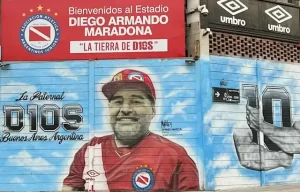Pfizer: Antiviral Drug Paxlovid at $1,390 for COVID-19 Treatment
- EB Virus Could Be Infected by Kiss: A Hidden Threat Linked to Cancer
- The Silent Threat: How Gas Stoves Pollute Our Homes and Impact Health
- Paternal Microbiome Perturbations Impact Offspring Fitness
- New Report Casts Doubt on Maradona’s Cause of Death and Rocks Manslaughter Case
- Chinese academician unable to provide the exact source of liver transplants
- Early Biomarker for Multiple Sclerosis Development Identified Years in Advance
Pfizer Announces Commercial Pricing of Antiviral Drug Paxlovid at $1,390 for COVID-19 Treatment
- AstraZeneca Admits for the First Time that its COVID Vaccine Has Blood Clot Side Effects
- Was COVID virus leaked from the Chinese WIV lab?
- HIV Cure Research: New Study Links Viral DNA Levels to Spontaneous Control
- FDA has mandated a top-level black box warning for all marketed CAR-T therapies
- Can people with high blood pressure eat peanuts?
- What is the difference between dopamine and dobutamine?
- How long can the patient live after heart stent surgery?
Pfizer Announces Commercial Pricing of Antiviral Drug Paxlovid at $1,390 for COVID-19 Treatment
On Oct 18, Pfizer announced that it will launch its antiviral drug Paxlovid in the commercial market later this year, pricing a five-day course at $1,390.
This price is more than double the amount the company had charged the government during the pandemic, which was $529.
A spokesperson for Pfizer conveyed in a text message confirming the new commercial price, “The pricing of Paxlovid is based on its value to patients, healthcare providers, and healthcare systems.”
The spokesperson noted that company executives had been clear from the outset that prices for private payers would increase once the pandemic came to an end.

Why is the price doubled?
The price of Paxlovid doubled when it transitioned from the government pricing during the pandemic at $529 to the commercial pricing of $1,390 for several reasons:
-
Market Dynamics: During the pandemic, governments and healthcare systems worldwide faced an urgent need for effective COVID-19 treatments. Pfizer may have initially priced Paxlovid lower to ensure quick access and affordability for governments dealing with a public health crisis. However, as the immediate crisis subsided, the company adjusted the price to align with market dynamics and commercial norms.
-
Profit Motive: Companies often adjust prices based on their profit objectives. By doubling the price, Pfizer aims to generate greater revenue and profit from the commercial sale of Paxlovid, particularly when selling to private payers and healthcare systems.
-
Predictable Pricing Shift: Pfizer’s spokesperson mentioned that the company had been transparent from the beginning about the intention to increase prices for private payers once the pandemic ended. This reflects a planned shift in pricing strategy as the healthcare landscape changes.
-
Cost Recovery: The cost of developing, manufacturing, and distributing a new pharmaceutical product can be substantial. Increasing the price for commercial sales allows Pfizer to recover these costs and potentially invest in further research and development.
-
Insurance and Negotiations: It’s important to note that the actual price paid by patients and healthcare systems may vary due to negotiations with insurance providers and government programs. The stated price is often a starting point for negotiations.
In summary, the price doubling is a result of a shift from the lower government pricing established during the pandemic to a higher commercial price, reflecting the evolving market conditions, profit motives, and the need to cover costs and generate revenue.
It is a common practice in the pharmaceutical industry to adjust prices based on various factors, including market demand and cost recovery, after addressing immediate public health crises.
Pfizer Announces Commercial Pricing of Antiviral Drug Paxlovid at $1,390 for COVID-19 Treatment
(source:internet, reference only)
Disclaimer of medicaltrend.org
Important Note: The information provided is for informational purposes only and should not be considered as medical advice.



